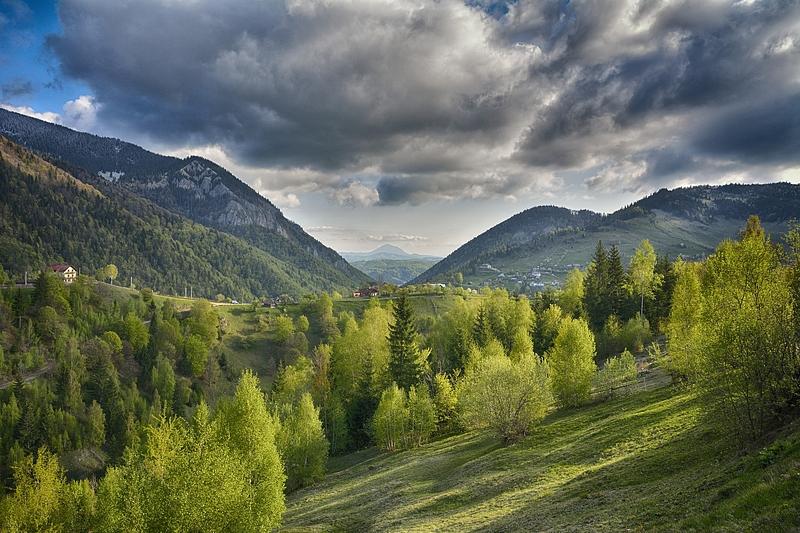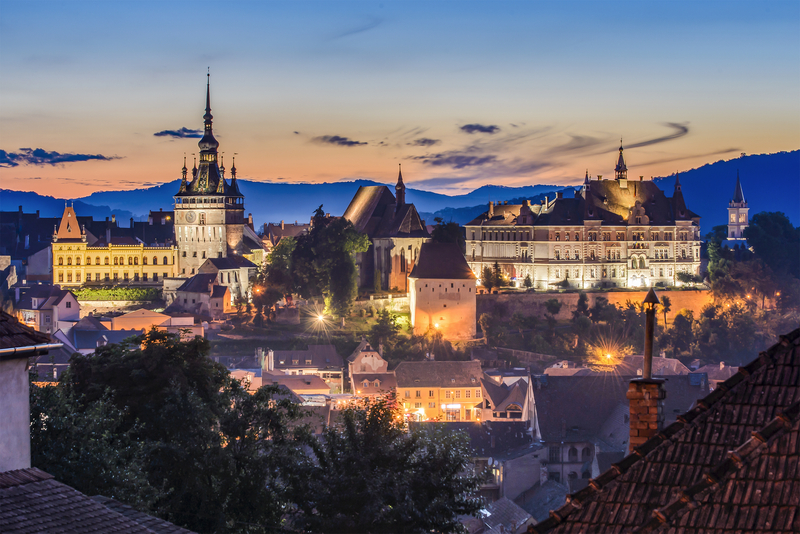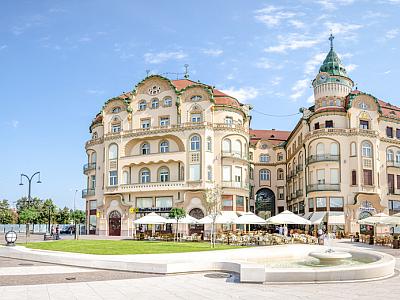Romania travel: Places to consider when planning this year's journeys

The start of the vaccination campaign against Covid-19 raised many hopes for a better tourism year. After months of travel and movement restrictions, work-from-home arrangements, and entertainment experiences that shifted to an online format, many have been waiting to plan a holiday and a change of scenery.
As the coronavirus situation is constantly shifting, remote venues and outdoor activities can make it easier to follow the current sanitary norms. At the same time, domestic destinations are still a first choice for many as the outlook for international travel remains uncertain, with numerous entry restrictions in place. We outline below several local spots to discover or rediscover in 2021.
One of the top tourism spots in the country, Sibiu had to cancel its tourist magnet Christmas market last year. To make up for 2020 and go back as much as possible to normal, the local authorities have registered the city in the European Best Destinations competition for a second year in a row. With its well-preserved Old Town, Sibiu can keep visitors outdoors exploring its narrow, cobbled streets, defense towers and walls, and impressive churches. The Brukenthal Museum is another must-visit in the city, either for its Art Galleries, with its collections of European and Romanian art housed in the Brukenthal Palace, or the Pharmacy Museum and History Museum housed in the ensemble constructed around the residence of former mayor Thomas Altemberger. The open-air Astra Museum, only four kilometers away from the city, showcases a wealth of traditional houses, workshops, and other constructions and hosts numerous events. More about Sibiu here.
When it comes to remarkable architecture, Oradea takes up a top spot, with its Art Nouveau palaces that helped put it in the European network encompassing cities with a rich heritage of this type. There is much to discover in the stuccos, decorations, and ironworks of the buildings, and an Art Nouveau Museum opened last year in the city’s Darvas - La Roche house. A stroll down the Republicii walkway will reveal many Secession-style buildings and allow visitors to get a feel of the city’s rhythm. The refurbished Oradea Fortress is another site on the list of must-sees and the setting for the city’s annual Medieval Festival. Oradea also hosts one of the largest Baroque-style complexes in Southeast Europe, where visitors can see the Baroque Palace (Episcopal Palace), meant to be a smaller copy of the Belvedere Palace in Vienna. More about Oradea here.
A Unesco heritage site since 1999, the historic center of Sighișoara is another place to visit to see what the culture of the Transylvanian Saxons meant in the region. Visitors can discover the fortified walls and towers -among them the better known Clock Tower and its cobblestone alleys lined up by cafes and craft shops. Visitors can also discover the story of Vlad Dracul and see how this links to Vlad the Impaler – the fictional character the latter inspired can be encountered quite often in the available tourist souvenir offer.
To further explore the Saxon heritage of the region, travelers can head to Mediaș, a burg less known than Sibiu and Sighişoara but boasting its centuries-old history and heritage - one highlight is the Church of St. Margret, an emblem of the city. More about Mediaș here. Mediaș can also serve as a base to explore several Saxon villages, including Valea Viilor, Moşna, Bazna, and Biertan. During summer, the hills of Transylvania can also be explored by bike. More about the available bike trails here.

Another of the country’s Unesco Heritage sites, the Danube Delta is a go-to spot for nature lovers and birdwatching enthusiasts. As the Danube reaches the Black Sea, it forms a network of canals, marshes, and reed islands that are home to some 300 bird species, including cormorants and ibises. A holiday here is also an opportunity to discover some secluded beach spots but also to try the fish-based specialties. Accommodation can be found in traditional fishermen villages but also at luxury resorts.

Piatra Craiului National Park offers many options for outdoor activities, from biking trails and hiking to visiting spectacular gorges or caves. There are more than 40 tourist routes here, with many trails starting at Prăpăstiile Zărneștiului, a gorge guarded by tall rocks and one of the spots where Anthony Minghella’s Cold Mountain, starring Nicole Kidman and Jude Law, was shot. A popular route is the one to Curmatura. In winter, when many trails are closed for safety reasons, visitors can visit some of the beautiful villages in the area: Peștera, Măgura (opening photo), or Șirnea. More about hiking in Piatra Craiului here. More about Măgura here.

The area of Buzău county is known for the Muddy Volcanoes, not the volcanoes one would expect but volcano-shaped structures where mud and natural gases erupt. It also has plenty of nature landscapes to be discovered, ranging from a planned Unesco-accredited geopark and one of Romania´s wine regions to hills and mountains that can be perfect for sport and adventure. In the area, travelers can try a trip to the “bottomless lake” in Siriu, check out the “trovanti” of the region of Ulmet-Bozioru, or see the rupestrian dwellings in Buzău Mountains. More about Buzău here and here.
Current restrictions & recommendations
Romania extended the state of alert on January 13 for another 30 days, keeping previously-introduced measures in place, including the night-time curfew between 23:00 and 5:00 and the requirement to wear a mask in public venues. The measures are listed in Romanian here.
Depending on the epidemiological situation in every locality, additional zonal or local measures can apply. When making travel plans, specialists advise on taking into account the coronavirus situation in the considered destination and the risk for severe illness of everyone traveling. The prefecture (prefectură) in every county publish updates on the Covid-19 incidence rate by locality, while the overall county incidence rate is published daily in the report on the number of cases issued by the Strategic Communications Group (available here).
When traveling, the usual prevention measures apply: wearing a mask, maintaining a safe distance, avoiding contact with anyone ill, and washing or disinfecting hands often. Avoiding crowded times when using public transport is also advised. Many facilities list the Covid-19 prevention measures they implemented on their website, and travelers can check that in advance.
(Photo: Remus Cucu | Dreamstime.com)
simona@romania-insider.com














